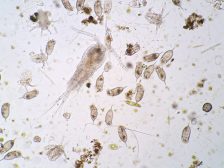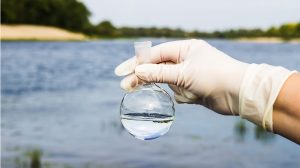Definition
noun
Animal or animal-like constituent of plankton, comprised mainly of freely floating protozoa, small crustaceans (e.g. krill), and fish eggs and larvae
Supplement
Plankton pertain to the small organisms that drift, float, or weakly swimming in aquatic habitats. Some of them may be capable of diel vertical migration but they, in general, flow with their surrounding currents. They may be classified according to their trophic level groups: (1) phytoplankton, (2) zooplankton, (3) bacterioplankton, and (4) mycoplankton.
Zooplankton pertain to the animal or animal-like organisms comprising the plankton. Most of them are microscopic, such as protozoa, crustaceans, and eggs and larvae of certain aquatic animals (e.g. fish, squid, etc.). Thus, they may be further described as holoplanktonic and meroplanktonic. Holoplankton are those that spend their entire life cycle as plankton. In contrast, meroplankton are those that go through a plankton stage in their life cycle and then grow into becoming a nekton or benthic.
Few of them are macroscopic. An example of a macroscopic zooplankter is the jelly fish. Some of them are described as animal-like because they are heterotrophic in contrast to phytoplankton that are plant-like due to their photosynthetic capability.
Word origin: Ancient Greek zoion (“animal”) + planktón, (planktós (“wandering”)
See also:
Dictionary > Zooplankton



